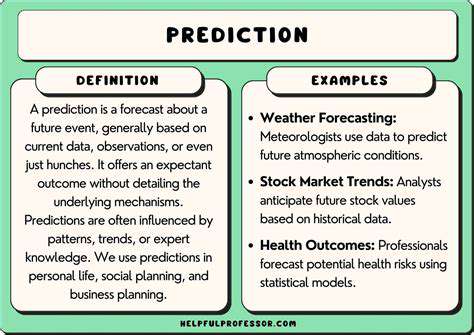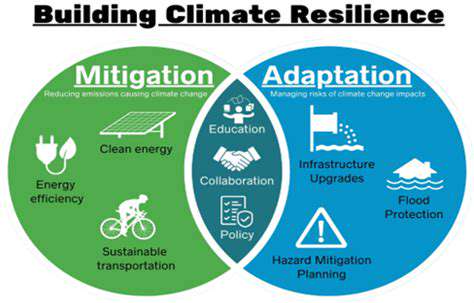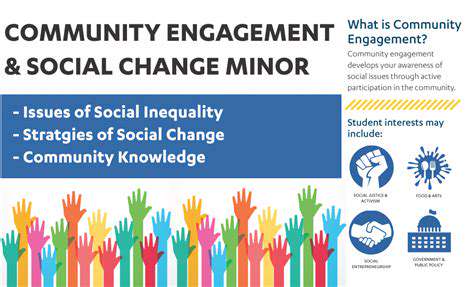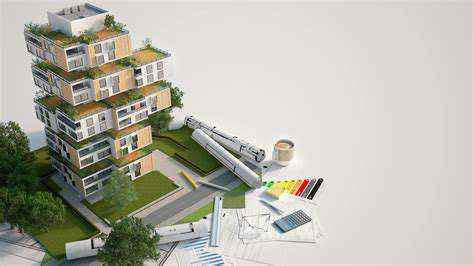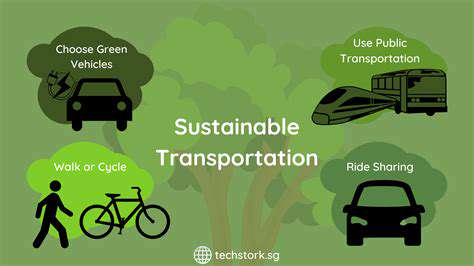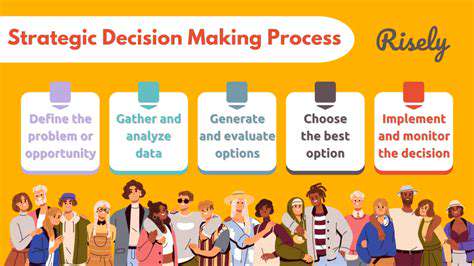Sustainable Real Estate and Community Development
Promoting Walkability, Cycling, and Public Transportation: Encouraging Active Living

Enhancing Pedestrian Infrastructure
Thoughtful pedestrian infrastructure transforms how people experience their neighborhoods. Continuous sidewalks with generous buffers from traffic create inviting corridors that encourage spontaneous walks to local shops and parks. Strategic placement of pedestrian refuges at busy intersections makes crossing safer for all ages, while well-designed street furniture invites neighbors to linger and connect.
True accessibility means designing for people of all mobilities. Consistent grade changes, detectable warning surfaces, and ample passing space on sidewalks create environments where everyone can navigate confidently. These features benefit parents with strollers, delivery workers with carts, and older adults alike - proving that inclusive design is simply good design.
Improving Cycling Infrastructure
Building a cycling culture requires infrastructure that makes biking feel safe and convenient for all skill levels. Protected bike lanes separated by physical barriers significantly increase ridership, especially among women, children, and older adults who are more risk-averse. Strategic placement of bike repair stations and air pumps along key routes reduces anxiety about mechanical issues.
The most effective systems treat bicycles as legitimate transportation, not recreation. Bike lanes that connect directly to transit hubs, employment centers, and commercial districts make cycling a practical choice for daily trips. When cities implement comprehensive bike networks with clear wayfinding, cycling becomes a viable alternative to driving for more residents.
Promoting Public Transportation
High-quality public transit forms the backbone of sustainable mobility systems. Frequent, reliable service with real-time arrival information builds rider confidence and reduces dependence on personal vehicles. Integrated fare systems that combine buses, trains, and bike-share programs create seamless multimodal trips that can compete with the convenience of driving.
Thoughtful transit-oriented development multiplies these benefits. When housing, jobs, and amenities cluster around transit hubs, more trips become short enough to walk or bike for the last mile. This creates neighborhoods where residents can easily access opportunities without being car-dependent, saving money and reducing emissions.
Encouraging Active Transportation
Shifting transportation habits requires making active options the easy, obvious choice. Employer-sponsored bike-to-work programs that offer showers, secure parking, and financial incentives can overcome common commuting barriers. School walking buses and senior walking groups create social structures that reinforce active habits across generations.
Creative placemaking can transform transportation infrastructure into community assets. When bike paths double as linear parks with public art, and bus stops incorporate small plazas with seating, transit becomes part of the social fabric rather than just a utility. These subtle design choices shape how people perceive and use their transportation options.
Creating Walkable Neighborhoods
The most livable neighborhoods bake walkability into their DNA. A careful mix of housing types, local businesses, and public spaces within a compact footprint creates destinations worth walking to. Human-scaled architecture with active ground-floor uses and transparent facades makes streets feel engaging and safe at all hours.
Micro-mobility hubs that combine bike-share, car-share, and parcel lockers reduce the need for private car ownership. When daily needs are within a comfortable walking distance, and occasional car trips can be easily rented by the hour, households can dramatically reduce their transportation costs and carbon footprints.
Integrating Transportation Planning
Breaking auto-dependency requires rethinking traditional transportation hierarchies. Complete streets policies that give equal priority to pedestrians, cyclists, and transit users challenge decades of car-centric design. Parking maximums rather than minimums, coupled with robust alternatives, help rebalance our transportation ecosystem.
The most progressive cities are adopting mobility budgets that evaluate transportation investments based on how many people they move, not just vehicles. This paradigm shift leads to infrastructure that serves community health, economic access, and environmental goals alongside traditional mobility objectives.
Read more about Sustainable Real Estate and Community Development
Hot Recommendations
- AI in Property Marketing: Virtual Tours and VR
- Water Management Solutions for Sustainable Real Estate
- IoT Solutions for Smart Building Energy Management
- Sustainable Real Estate: Building a Greener Tomorrow
- Sustainable Real Estate: From Concept to Community
- AI Driven Due Diligence for Large Scale Developments
- Real Estate Sector and Global Climate Agreements
- Smart Buildings: The Key to Smarter Property Management
- Zero Waste Buildings: A Sustainable Real Estate Goal
- Understanding Climate Risk in Real Estate Financing
